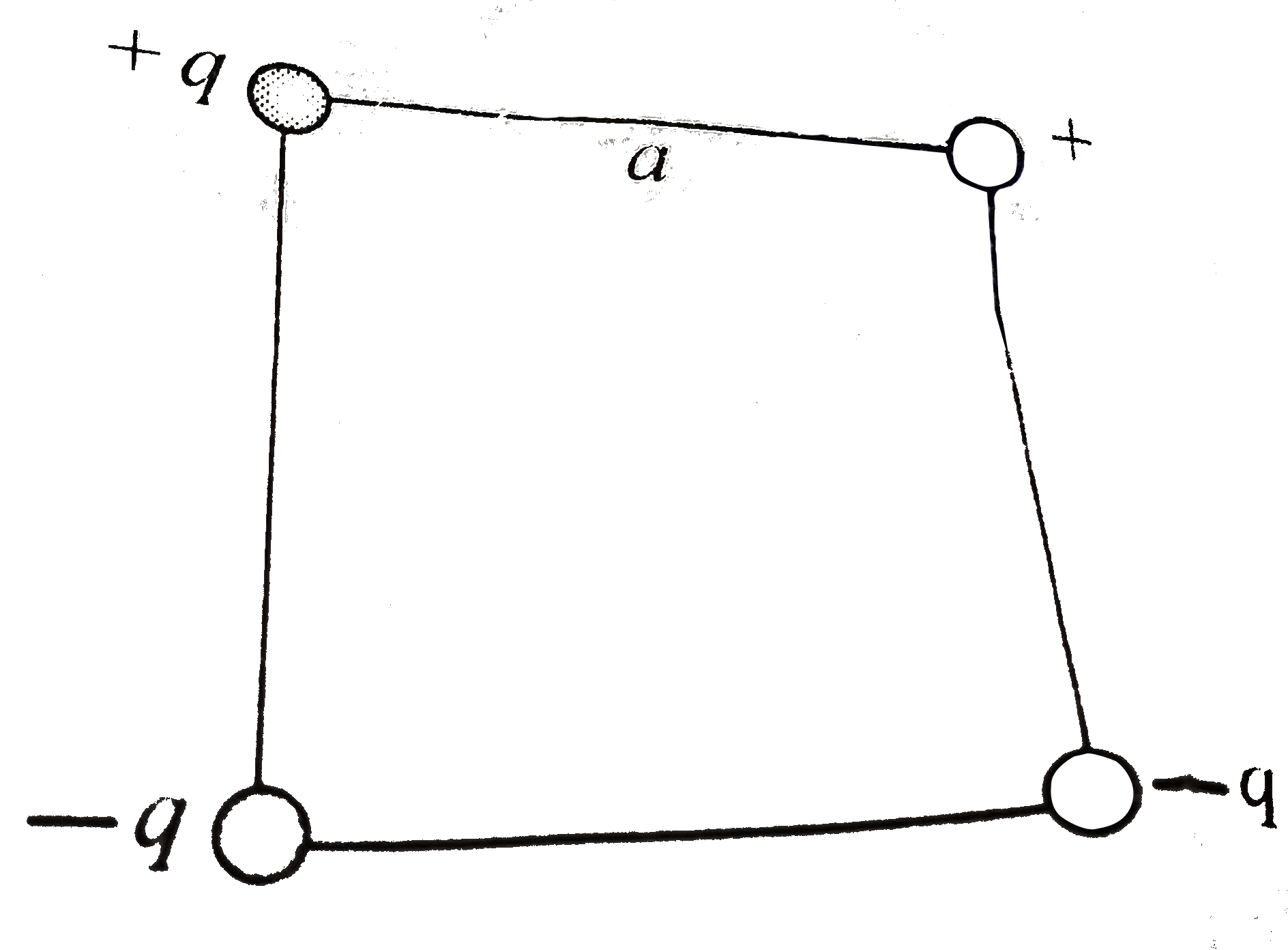Twenty seven drops of water of the same size are equally and similarly charged. They are then united to from a bigger drop. By what factor will the electrical potential changes.
9 times
27 times
6 times
3 times
The correct Answer is:A
To solve the problem of how the electrical potential changes when 27 equally charged drops of water combine to form a larger drop, we can follow these steps:
Step 1: Understand the initial potential of the smaller drops
The potential V of a single small drop can be expressed as:
V=k⋅QR
where:
- k is Coulomb's constant,
- Q is the charge on the drop,
- R is the radius of the small drop.
Step 2: Calculate the total charge of 27 small drops
If there are 27 drops, the total charge Qtotal on these drops is:
Qtotal=27Q
Step 3: Calculate the potential due to all 27 drops
The potential V due to all 27 drops can be expressed as:
V=k⋅27QR
Step 4: Substitute the expression for charge Q
The charge Q can be related to the volume and density of the drops. The charge can be expressed as:
Q=ρ⋅Vdrop=ρ⋅(43πR3)
Substituting this into the potential equation gives:
V=k⋅27⋅(ρ⋅43πR3)R
This simplifies to:
V=36kπR2ρ
Step 5: Calculate the radius of the larger drop
When the 27 drops combine, the volume remains constant. Therefore, we have:
27⋅(43πR3)=43πR3big
From this, we can derive:
R3big=27R3⟹Rbig=3R
Step 6: Calculate the potential of the larger drop
Now, we can find the potential V′ of the larger drop:
V′=k⋅QbigRbig
Where Qbig=27Q. Thus:
V′=k⋅27Q3R=273⋅k⋅QR=9V
Step 7: Determine the factor of change in potential
To find the factor by which the potential changes, we compare the potentials:
VV′=36kπR2ρ9V=369=4
Conclusion
Thus, the electrical potential changes by a factor of 4 when the 27 drops combine into one larger drop.
The potential V of a single small drop can be expressed as:
V=k⋅QR
where:
- k is Coulomb's constant,
- Q is the charge on the drop,
- R is the radius of the small drop.
If there are 27 drops, the total charge Qtotal on these drops is:
Qtotal=27Q
The potential V due to all 27 drops can be expressed as:
V=k⋅27QR
The charge Q can be related to the volume and density of the drops. The charge can be expressed as:
Q=ρ⋅Vdrop=ρ⋅(43πR3)
Substituting this into the potential equation gives:
V=k⋅27⋅(ρ⋅43πR3)R
This simplifies to:
V=36kπR2ρ
When the 27 drops combine, the volume remains constant. Therefore, we have:
27⋅(43πR3)=43πR3big
From this, we can derive:
R3big=27R3⟹Rbig=3R
Now, we can find the potential V′ of the larger drop:
V′=k⋅QbigRbig
Where Qbig=27Q. Thus:
V′=k⋅27Q3R=273⋅k⋅QR=9V
To find the factor by which the potential changes, we compare the potentials:
VV′=36kπR2ρ9V=369=4
Thus, the electrical potential changes by a factor of 4 when the 27 drops combine into one larger drop.
Topper's Solved these Questions
- DAILY PRACTICE PROBLEMBook:RESONANCE ENGLISHChapter:DAILY PRACTICE PROBLEMExercise:DPP No.37
Explore 9 Videos
- DAILY PRACTICE PROBLEMBook:RESONANCE ENGLISHChapter:DAILY PRACTICE PROBLEMExercise:DPP No.38
Explore 20 Videos
- DAILY PRACTICE PROBLEMBook:RESONANCE ENGLISHChapter:DAILY PRACTICE PROBLEMExercise:DPP No.35
Explore 20 Videos
- CURRENT ELECTRICITYBook:RESONANCE ENGLISHChapter:CURRENT ELECTRICITYExercise:High Level Problems (HIP)
Explore 19 Videos
- ELECTRO MAGNETIC WAVESBook:RESONANCE ENGLISHChapter:ELECTRO MAGNETIC WAVESExercise:Exercise 3
Explore 27 Videos
Similar Questions
There are 27 drops of a conducting fluid. Each has a radius r and they are charged to a potential V0. They are then combined to form a bigger drop. Find its potential.
View SolutionThere are 27 drops of a conducting fluid. Each drop has radius r, and each of them is charged to the same potential V1. They are then combined to from a bigger drop. The potential of the bigger drop is V2. Find the ratio V2/V1. Ignore the change in density of the fluid on combining the drops.
View SolutionEight oil drops of same size are charged to a potential to 50 V each. These oil drops are merged into one single larged drop. What will be the potential of the large drop ?
View Solution27 small drops of same size are charged to V volts each. If they coalesce to form a single large drop, then its potential will be
View SolutionEight small drops, each of radius r and having same charge q are combined to form a big drop. The ratio between the potentials of the bigger drop and the smaller drop is
View SolutionFour charges are placed at four corners of a square as shown in figure. The side of the square is a. Two charges are positive and two are negative, but their magnitudes are the same. Now, an external agent starts decreasing all the sides of the square slowly and at the same rate. What happens to the electrical potential energy of the system and what will be the nature of work done by the agent?

View SolutionEight equals charged tiny drops are combined to form a big drop. If the potential on each drop is 10V then potential of big drop will be -
View SolutionTwo equal drops of water are falling through air with a steady volocity of 10cm/s. If the drops recombine to form a single drop what would be their terminal velocity ?
View SolutionEight equal drops of water are falling through air with a steady velocity of 0.1ms−1 combine to form a single drop, what should be the new terminal velocity.
View Solution1000 drops of same size are charged to a potential of 1 V each. If they coalesce to form in single drop, its potential would be
View Solution